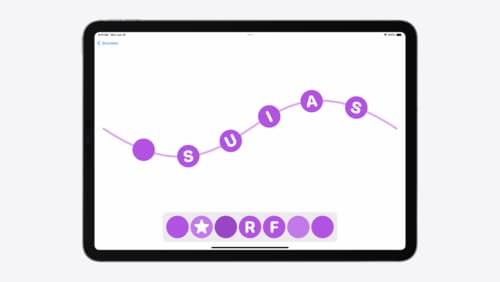What tips should one follow to avoid unnecessary re rendering in SwiftUI?
Asked on 2024-08-08
1 search
To avoid unnecessary re-rendering in SwiftUI, you can follow these tips:
-
Use Value Types: SwiftUI views are value types defined using structs instead of classes. This ensures that views are lightweight and can be recreated efficiently. (SwiftUI essentials)
-
State Management: Ensure that your state changes are minimal and only affect the parts of the view that need updating. SwiftUI automatically keeps your UI up to date by maintaining a representation of the user interface behind the scenes. (SwiftUI essentials)
-
Composition: Breaking up one view into multiple smaller views does not hurt performance. SwiftUI uses composition extensively, and it allows you to organize your code better without compromising performance. (SwiftUI essentials)
-
Avoid Imperative Code: SwiftUI views should be declarative descriptions of the UI state. Avoid using imperative code to make changes to the UI over time. (SwiftUI essentials)
-
Use
@Stateand@BindingWisely: Use@Statefor local state within a view and@Bindingto pass state between views. This ensures that only the necessary parts of the view hierarchy are updated when the state changes. (SwiftUI essentials) -
Leverage Previews: Use Xcode previews to quickly see how your views look and behave in different contexts. This helps you identify and optimize parts of your UI that may cause unnecessary re-rendering. (SwiftUI essentials)
By following these tips, you can ensure that your SwiftUI app remains performant and avoids unnecessary re-rendering.

Enhance your UI animations and transitions
Explore how to adopt the zoom transition in navigation and presentations to increase the sense of continuity in your app, and learn how to animate UIKit views with SwiftUI animations to make it easier to build animations that feel continuous.

Get started with HealthKit in visionOS
Discover how to use HealthKit to create experiences that take full advantage of the spatial canvas. Learn the capabilities of HealthKit on the platform, find out how to bring an existing iPadOS app to visionOS, and explore the special considerations governing HealthKit during a Guest User session. You’ll also learn ways to use SwiftUI, Swift Charts, and Swift concurrency to craft innovative experiences with HealthKit.

What’s new in SwiftUI
Learn how you can use SwiftUI to build great apps for any Apple platform. Explore a fresh new look and feel for tabs and documents on iPadOS. Improve your window management with new windowing APIs, and gain more control over immersive spaces and volumes in your visionOS apps. We’ll also take you through other exciting refinements that help you make expressive charts, customize and layout text, and so much more.
